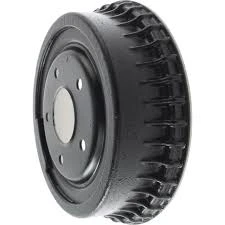
-
 Afrikaans
Afrikaans -
 Albanian
Albanian -
 Amharic
Amharic -
 Arabic
Arabic -
 Armenian
Armenian -
 Azerbaijani
Azerbaijani -
 Basque
Basque -
 Belarusian
Belarusian -
 Bengali
Bengali -
 Bosnian
Bosnian -
 Bulgarian
Bulgarian -
 Catalan
Catalan -
 Cebuano
Cebuano -
 Corsican
Corsican -
 Croatian
Croatian -
 Czech
Czech -
 Danish
Danish -
 Dutch
Dutch -
 Inglês
Inglês -
 Esperanto
Esperanto -
 Estonian
Estonian -
 Finnish
Finnish -
 French
French -
 Frisian
Frisian -
 Galician
Galician -
 Georgian
Georgian -
 German
German -
 Greek
Greek -
 Gujarati
Gujarati -
 Haitian Creole
Haitian Creole -
 hausa
hausa -
 hawaiian
hawaiian -
 Hebrew
Hebrew -
 Hindi
Hindi -
 Miao
Miao -
 Hungarian
Hungarian -
 Icelandic
Icelandic -
 igbo
igbo -
 Indonesian
Indonesian -
 irish
irish -
 Italian
Italian -
 Japanese
Japanese -
 Javanese
Javanese -
 Kannada
Kannada -
 kazakh
kazakh -
 Khmer
Khmer -
 Rwandese
Rwandese -
 Korean
Korean -
 Kurdish
Kurdish -
 Kyrgyz
Kyrgyz -
 Lao
Lao -
 Latin
Latin -
 Latvian
Latvian -
 Lithuanian
Lithuanian -
 Luxembourgish
Luxembourgish -
 Macedonian
Macedonian -
 Malgashi
Malgashi -
 Malay
Malay -
 Malayalam
Malayalam -
 Maltese
Maltese -
 Maori
Maori -
 Marathi
Marathi -
 Mongolian
Mongolian -
 Myanmar
Myanmar -
 Nepali
Nepali -
 Norwegian
Norwegian -
 Norwegian
Norwegian -
 Occitan
Occitan -
 Pashto
Pashto -
 Persian
Persian -
 Polish
Polish -
 Portuguese
Portuguese -
 Punjabi
Punjabi -
 Romanian
Romanian -
 Russian
Russian -
 Samoan
Samoan -
 Scottish Gaelic
Scottish Gaelic -
 Serbian
Serbian -
 Sesotho
Sesotho -
 Shona
Shona -
 Sindhi
Sindhi -
 Sinhala
Sinhala -
 Slovak
Slovak -
 Slovenian
Slovenian -
 Somali
Somali -
 Spanish
Spanish -
 Sundanese
Sundanese -
 Swahili
Swahili -
 Swedish
Swedish -
 Tagalog
Tagalog -
 Tajik
Tajik -
 Tamil
Tamil -
 Tatar
Tatar -
 Telugu
Telugu -
 Thai
Thai -
 Turkish
Turkish -
 Turkmen
Turkmen -
 Ukrainian
Ukrainian -
 Urdu
Urdu -
 Uighur
Uighur -
 Uzbek
Uzbek -
 Vietnamese
Vietnamese -
 Welsh
Welsh -
 Bantu
Bantu -
 Yiddish
Yiddish -
 Yoruba
Yoruba -
 Zulu
Zulu
Exploring the Mechanics and Functionality of the Drum Brake System in Vehicles
Inside a Drum Brake Understanding the Mechanics and Functionality
Drum brakes have been a staple in automotive braking systems for over a century, playing a crucial role in vehicle safety and performance. The design and function of drum brakes revolve around a few key components that work together to slow down or stop a vehicle effectively. Understanding what's inside a drum brake can offer valuable insights into how this system operates and why it is still widely used in many vehicles today.
At the core of a drum brake system is the brake drum itself. Typically made of cast iron or aluminum, the drum is a cylindrical component that rotates with the wheel. When the driver presses the brake pedal, brake fluid is sent to the brake cylinder, which is housed within the brake assembly. This action initiates the braking process, but the real magic happens inside the drum.
Inside a Drum Brake Understanding the Mechanics and Functionality
One of the advantages of drum brakes is their ability to provide strong stopping power, especially under heavy load conditions. The design allows for a larger surface area in contact with the brake shoes compared to some disc brake designs, making drum brakes particularly effective for larger vehicles such as trucks and vans. This is why drum brakes are commonly found on the rear wheels of many passenger cars and commercial vehicles.
inside a drum brake

Another critical component of a drum brake system is the return spring. After the driver releases the brake pedal, the return spring pulls the brake shoes back to their resting position, away from the drum's surface. This prevents unnecessary wear of the friction material and ensures that the brakes do not drag while the vehicle is in motion. Proper adjustment of the return springs and the brake shoes is essential for maintaining optimal brake performance.
Moreover, drum brakes are often equipped with an adjuster mechanism that compensates for the wear of the brake shoes over time. As the friction material wears down, the adjuster will gradually reposition the shoes closer to the drum, ensuring consistent braking efficiency without requiring constant manual adjustments.
Despite the advantages, drum brakes do have some disadvantages. They tend to dissipate heat less efficiently than disc brakes, which can lead to brake fade during prolonged use. In high-performance situations, such as racing or mountainous driving, disc brakes are often preferred for their superior cooling and stopping power.
In summary, the inside of a drum brake system features an intricate arrangement of components working in harmony to provide efficient and reliable braking performance. From the rotating drum and friction-lined shoes to the hydraulic cylinder and return springs, each part has specific roles that contribute to the overall effectiveness of the braking system. While advancements in braking technology continue to evolve, drum brakes remain a relevant and important part of many vehicles, particularly where durability and reliability are paramount. Understanding the mechanics of drum brakes not only sheds light on automotive engineering but also highlights the importance of regular maintenance to ensure safety on the road.
-
What Are Drum BrakesNotíciasJul.07,2025
-
Understanding Brake Drum MaterialNotíciasJul.07,2025
-
Semi-Trailer Brake Drum: A Key Component for Extreme Loads and Long-Distance TransportNotíciasJul.07,2025
-
Drum Brake Pads for SaleNotíciasJul.07,2025
-
Brake Drums for SaleNotíciasJul.07,2025
-
Brake Drum ManufacturerNotíciasJul.07,2025
-
Aluminum Brake Drums: The Future of High-Performance CarsNotíciasJul.07,2025
